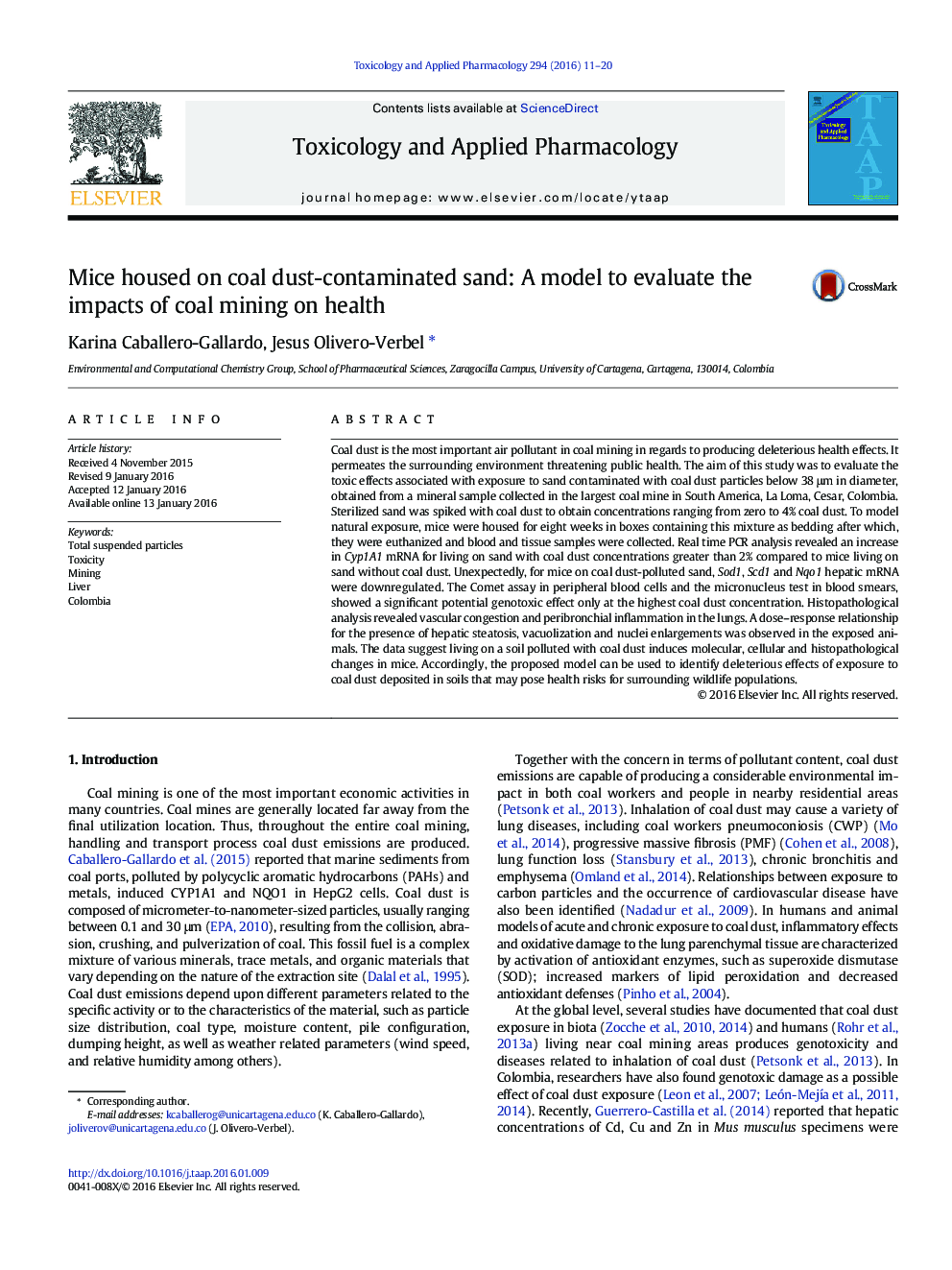| کد مقاله | کد نشریه | سال انتشار | مقاله انگلیسی | نسخه تمام متن |
|---|---|---|---|---|
| 2568211 | 1561168 | 2016 | 10 صفحه PDF | دانلود رایگان |
• Mice were exposed to coal dust-contaminated sand.
• mRNA Markers for PAH exposure, lipid metabolism and oxidative stress increased.
• ALT activity in plasma increased at the highest exposure to coal dust.
• Liver tissues of exposed mice showed steatosis and inflammation.
• Coal dust exposure produced changes in several blood components.
Coal dust is the most important air pollutant in coal mining in regards to producing deleterious health effects. It permeates the surrounding environment threatening public health. The aim of this study was to evaluate the toxic effects associated with exposure to sand contaminated with coal dust particles below 38 μm in diameter, obtained from a mineral sample collected in the largest coal mine in South America, La Loma, Cesar, Colombia. Sterilized sand was spiked with coal dust to obtain concentrations ranging from zero to 4% coal dust. To model natural exposure, mice were housed for eight weeks in boxes containing this mixture as bedding after which, they were euthanized and blood and tissue samples were collected. Real time PCR analysis revealed an increase in Cyp1A1 mRNA for living on sand with coal dust concentrations greater than 2% compared to mice living on sand without coal dust. Unexpectedly, for mice on coal dust-polluted sand, Sod1, Scd1 and Nqo1 hepatic mRNA were downregulated. The Comet assay in peripheral blood cells and the micronucleus test in blood smears, showed a significant potential genotoxic effect only at the highest coal dust concentration. Histopathological analysis revealed vascular congestion and peribronchial inflammation in the lungs. A dose–response relationship for the presence of hepatic steatosis, vacuolization and nuclei enlargements was observed in the exposed animals. The data suggest living on a soil polluted with coal dust induces molecular, cellular and histopathological changes in mice. Accordingly, the proposed model can be used to identify deleterious effects of exposure to coal dust deposited in soils that may pose health risks for surrounding wildlife populations.
Journal: Toxicology and Applied Pharmacology - Volume 294, 1 March 2016, Pages 11–20
